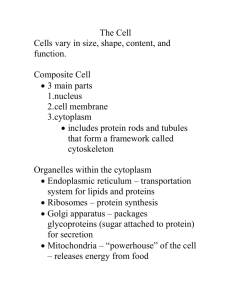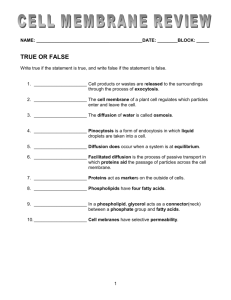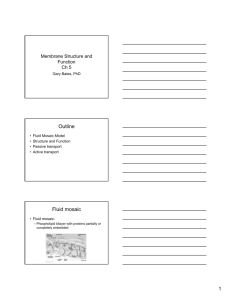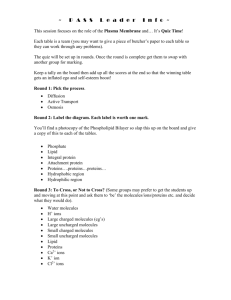U2L5CellMembraneTransport
advertisement
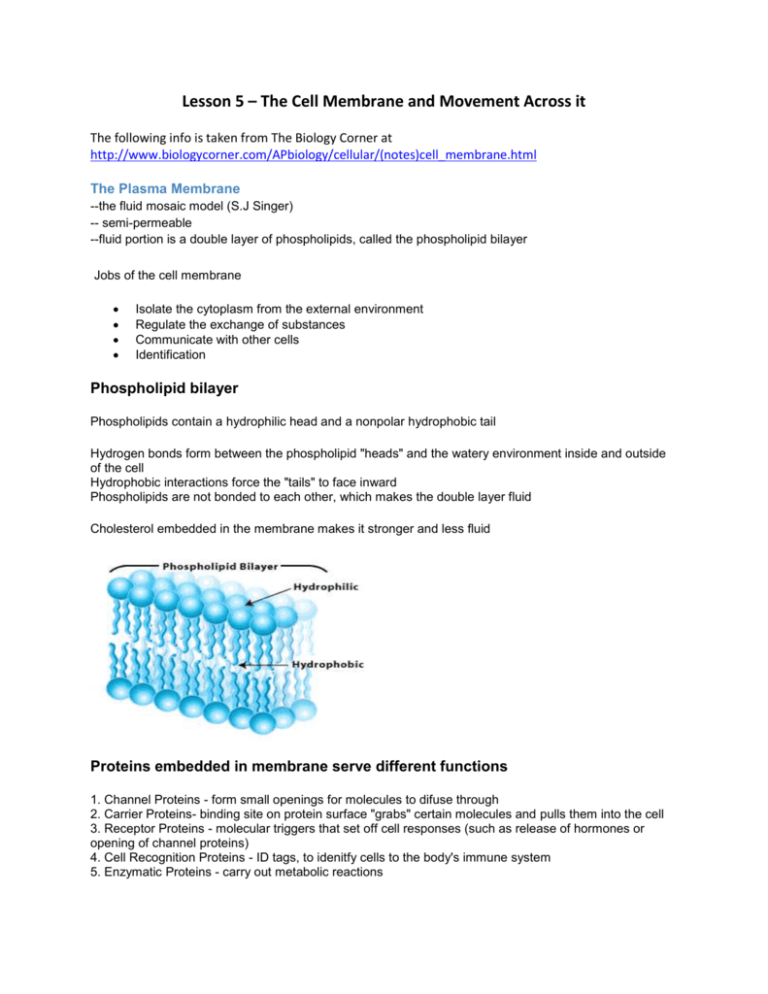
Lesson 5 – The Cell Membrane and Movement Across it The following info is taken from The Biology Corner at http://www.biologycorner.com/APbiology/cellular/(notes)cell_membrane.html The Plasma Membrane --the fluid mosaic model (S.J Singer) -- semi-permeable --fluid portion is a double layer of phospholipids, called the phospholipid bilayer Jobs of the cell membrane Isolate the cytoplasm from the external environment Regulate the exchange of substances Communicate with other cells Identification Phospholipid bilayer Phospholipids contain a hydrophilic head and a nonpolar hydrophobic tail Hydrogen bonds form between the phospholipid "heads" and the watery environment inside and outside of the cell Hydrophobic interactions force the "tails" to face inward Phospholipids are not bonded to each other, which makes the double layer fluid Cholesterol embedded in the membrane makes it stronger and less fluid Proteins embedded in membrane serve different functions 1. Channel Proteins - form small openings for molecules to difuse through 2. Carrier Proteins- binding site on protein surface "grabs" certain molecules and pulls them into the cell 3. Receptor Proteins - molecular triggers that set off cell responses (such as release of hormones or opening of channel proteins) 4. Cell Recognition Proteins - ID tags, to idenitfy cells to the body's immune system 5. Enzymatic Proteins - carry out metabolic reactions Transport Across Membrane *differentiallty permeable / semipermeable Passive Transport Simple Diffusion - water, oxygen and other molecules move from areas of high concentration to areas of low concentration, down a concentration gradient Facilitation Diffusion - diffusion that is assisted by proteins (channel or carrier proteins) Osmosis - diffusion of water. Salt Sucks Osmosis affects the turgidity of cells, different solution can affect the cells internal water amounts Contractiles Vacuoles are found in freshwater microorganisms - they pump out excess water Turgor pressure occurs in plants cells as their central vacuoles fill with water. Active Transport - involves moving molecules "uphill" against the concentration gradient, which requires energy Endocytosis - taking substances into the cell (pinocytosis for water, phagocytosis for solids) Exocytosis - pushing substances out of the cell, such as the removal of waste Sodium-Potassium Pump - pumps out 3 sodiums for ever 2 potassium's taken in against gradient Please watch the animation explaining these topics at: http://www.northland.cc.mn.us/biology/Biology1111/animations/passive1.html 1. How are diffusion and osmosis the same? How are they different? What are the similarities and the differences between active and passive transport?


